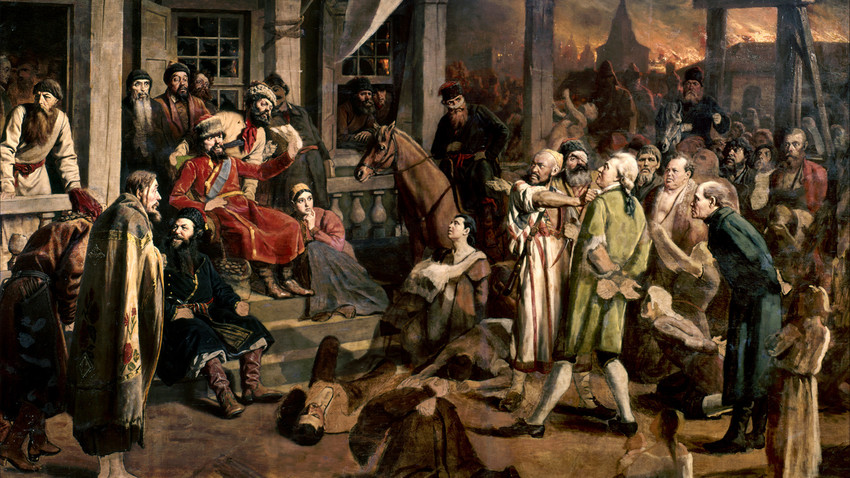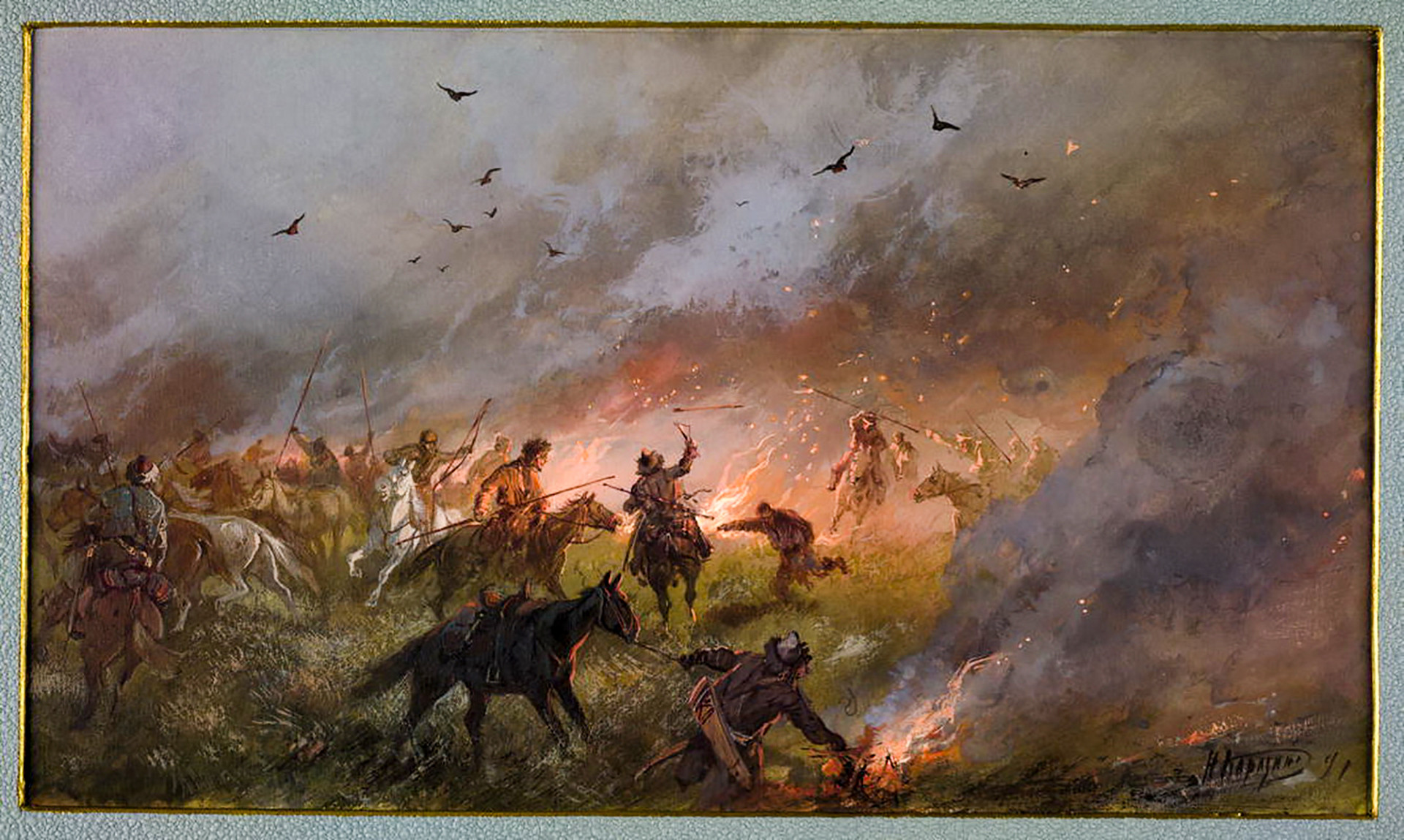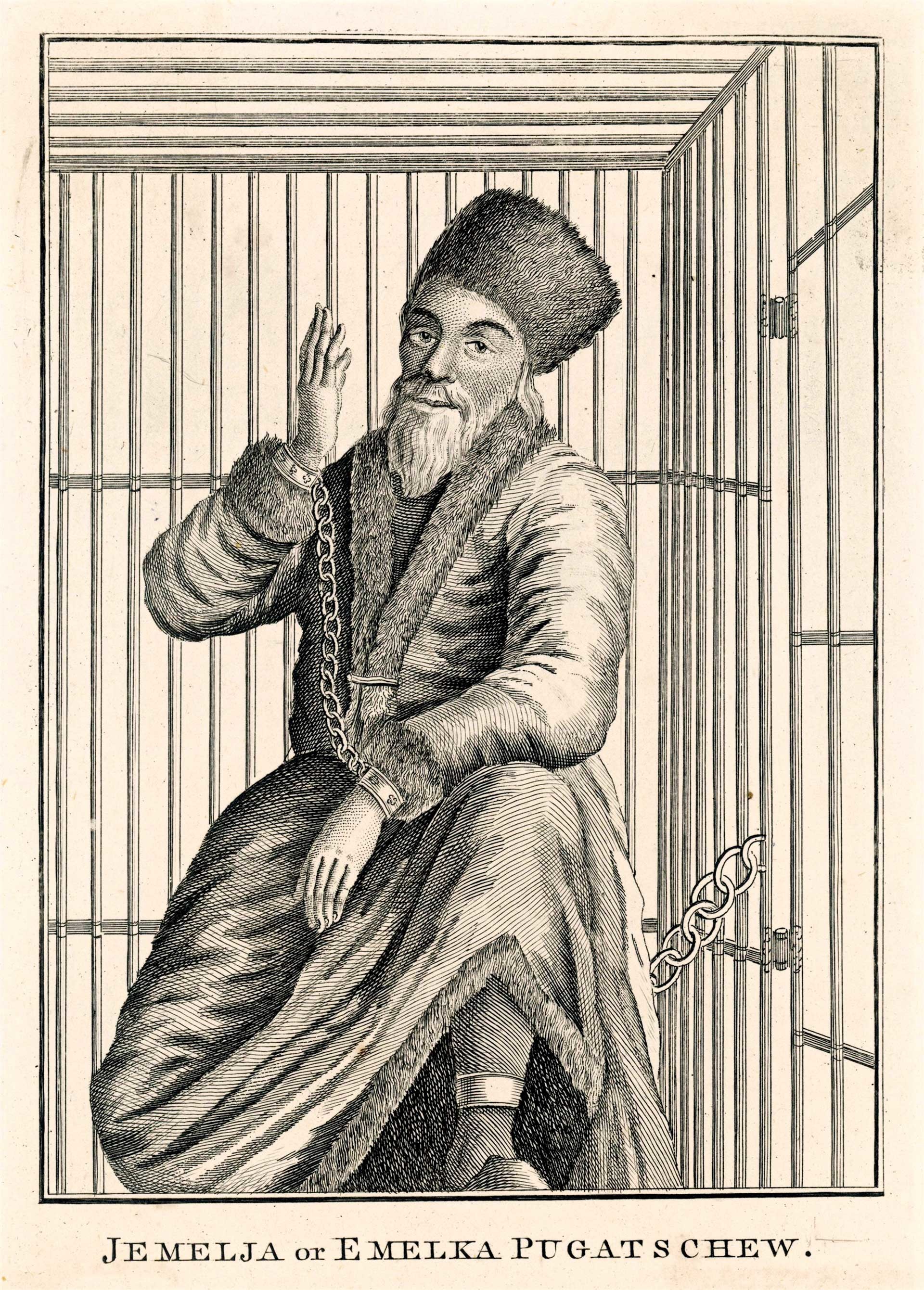Pugachev’s Rebellion: 5 questions about the biggest uprising in Russia’s history

The Pugachyov's Judgement by Vasily Perov, 1878. State Historic Museum, Moscow, Russia.
Global Look Press1. What was so special about Pugachev’s insurrection?
The Pugachev Rebellion kicked off in
At the peak of the
Catherine II’s government had to seek a faster resolution to Russia’s war with Turkey (which was raging at the same time) so she could redeploy her best troops to suppress the rebellion on home soil. Alexander Pushkin was so fascinated by Pugachev’s cause that he devoted two books to the subject.
2. Who was Pugachev?
The man who managed to shake the mighty Empire to its core was an average Cossack from the Don Region. Pugachev joined the army and despite being a courageous soldier ending up defecting. As a
At the time the Cossacks enjoyed a special status in Russia due to their military service obligations, as they were skilled and fearsome warriors. However, some of their privileges were revoked by the central government. So they revolted, spearheaded by Pugachev who declared himself Emperor Peter III (the tsar who died/was killed a decade earlier) - becoming a uniting figure for the discontented Cossacks.

The Pugachev's uprising in Siberia by Nikolai Karazin.
Public domainDespite the fact Pugachev’s army lost most of the significant battles with Catherine II’s troops, people still joined the Cossack’s ranks from the regions he passed through. Most of the soldiers were peasants.
The 18th century saw the peasants’ situation worsen as serfdom became stronger. Pre-revolutionary historian Vasily Semevsky argued that in Pugachev’s movement, the peasants made clear their wishes – they wanted personal freedom and land.
4. What was Pugachev’s plan?
These aspirations were embodied in the manifesto issued by Pugachev in
However, this was only the first part of the famous document. The other half urged his supporters “to catch, execute, and hang” any noblemen who opposed him. Pugachev’s followers responded to the call. Many people lost their lives in the area of the uprising. In one region 348 of 1,425 noblemen were murdered. Rebels dealt with their victims brutally - when they captured one stronghold (Tatishchevskaya), they skinned its commander, stabbed his wife, and raped and killed his daughter.
5. How did the authorities deal with the revolters?
Government troops were equally cruel. While suppressing the rebellion they killed thousands. Many also had the word “thief” burned onto their foreheads before being sent to harsh prisons in Siberia.

Pugachev was brought to Moscow in a wooden cage. Engraving by an unnamed artist in Caulfield's Wonderful Characters.
Mary Evans Picture Library/Global Look PressPugachev and his backers were eventually defeated in
In Moscow Pugachev was beheaded. Before the
The authorities tried to erase his name from history. His house was burnt down and his village renamed. Even the river where the rebellion started was recoined from Yaik to
If using any of Russia Beyond's content, partly or in full, always provide an active hyperlink to the original material.
Subscribe
to our newsletter!
Get the week's best stories straight to your inbox